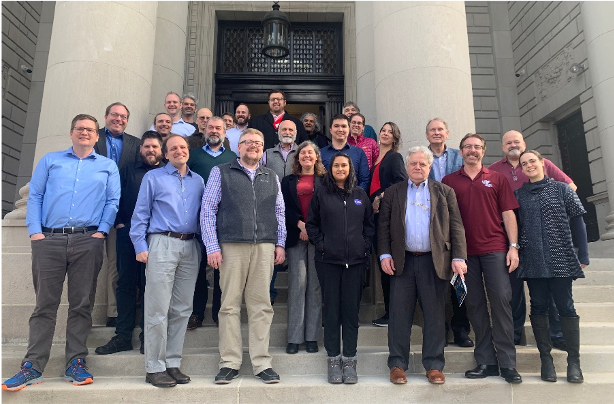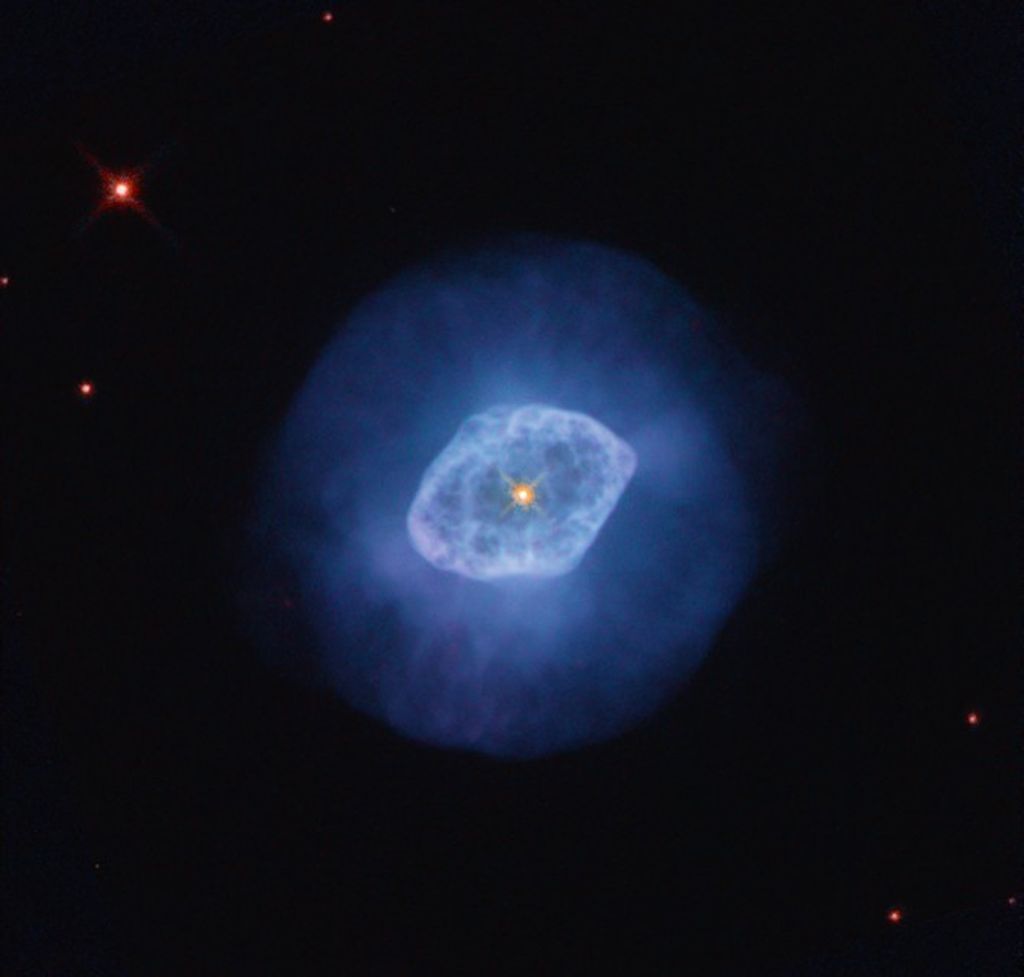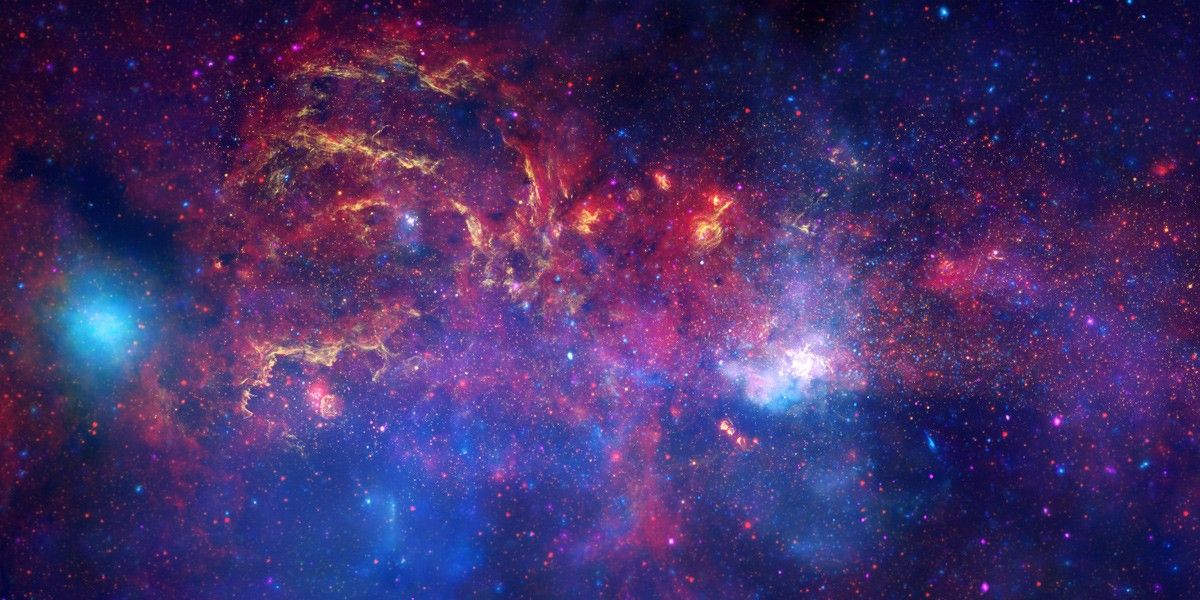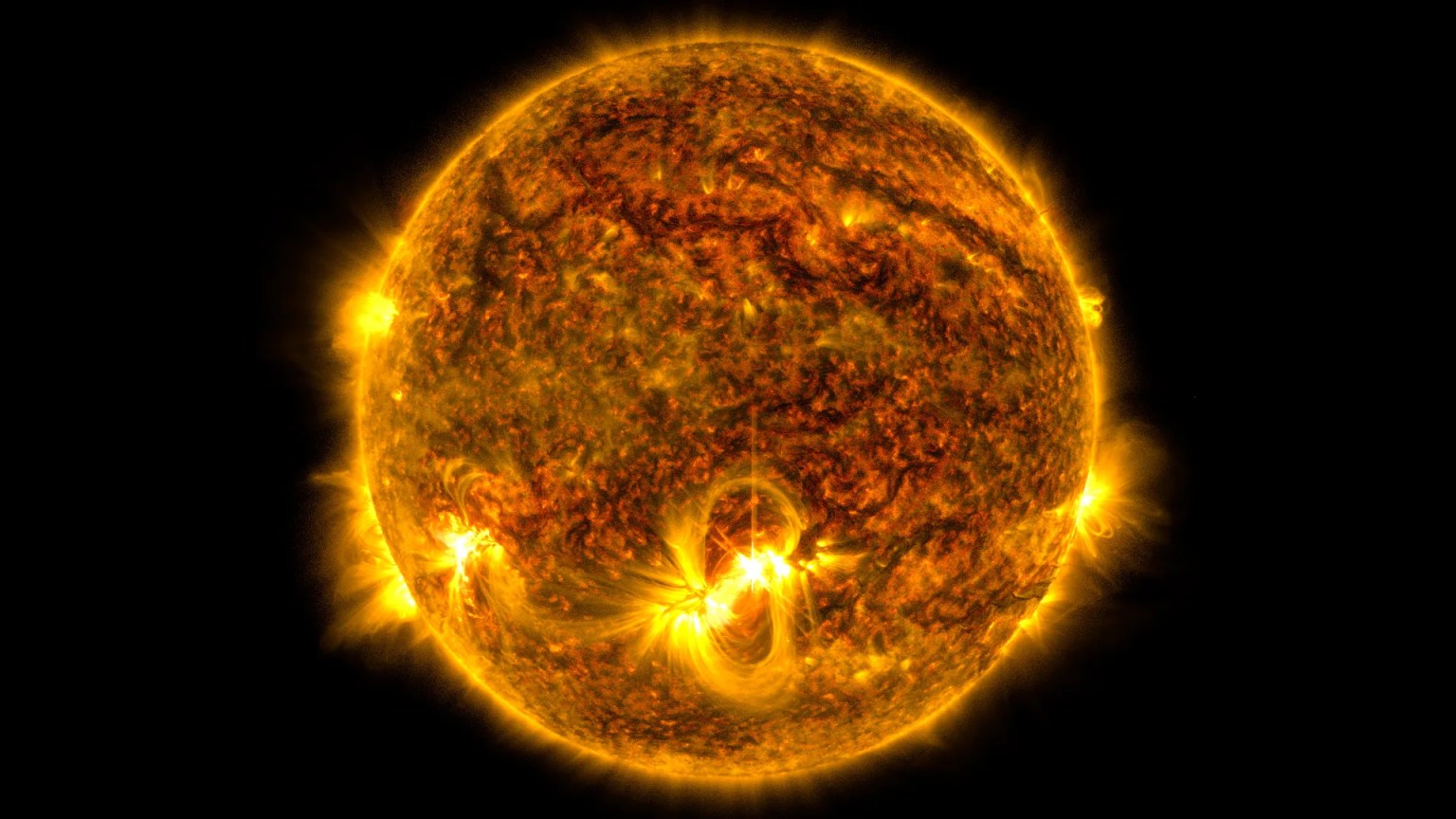NASA-NSF Extreme Precision Radial Velocity (EPRV) Initiative
Exoplanet Science Strategy Recommendation: “NASA and NSF should establish a strategic initiative in extremely precise radial velocities (EPRVs) to develop methods and facilities for measuring the masses of temperate terrestrial planets orbiting Sun-like stars”
-- 2018 National Academies Exoplanet Science Strategy Report
Response: NASA and NSF jointly commissioned a community-based “Extreme Precision Radial Velocity (EPRV) Working Group” (EPRV-WG) to develop a blueprint for a strategic EPRV initiative.
- The EPRV-WG brought together experts from around the world to lay out a potential pathway towards achieving the long-term precision, accuracy, and stability necessary to detect temperate, terrestrial, exoplanets around nearby Sun-like stars

Members of the EPRV Working Group during an in-person meeting at the Carnegie Institution for Science in Washington D.C. in 2020. - The Final Report produced by the group contains both the main report / recommendation of pathways to EPRV capabilities and appendicies from many of the sub-groups (e.g. stellar variability, oberving strategies, data pipelines, and instrumentation).
- A detailed technical description of the survey simulations included in the Final Report is available in Newman et al.
- A complementary analysis of how the addition of correlated stellar variability impacts the Final Report's survey predictions can be found in Luhn et al. 2023
- Soon after the report was released, NASA initiated the EPRV Research Coordination Network, which aims to support increased communication and collaboration within the radial velocity community via monthly colloquia, topical meetings, and working groups. Membership is open to the community and we invite participants from all corners of the RV community and related fields.
- NASA has also released two dedicated EPRV solicitations through ROSES with the goal of improving the precision of the radial velocity technique towards enabling the detection and measurement of Earth-mass planets orbiting sun-like stars in the temperate zone.
- The 2023 EPRV D.18 Solicitation has been posted to NSPIRES, with Phase 1 proposals due February 16th
- The projects selected as part of the 2021 EPRV D.17 Solicitation can be seen here
Points of Contact
- Hannah Jang-Condell- Exoplanet Program Scientist, NASA HQs
- Jennifer Burt - ExEPO EPRV Scientist & lead of the EPRV Research Coordination Network
- Eric Mamajek- ExEPO Deputy Program Scientist
- Dawn Gelino- ExEPO Manager































